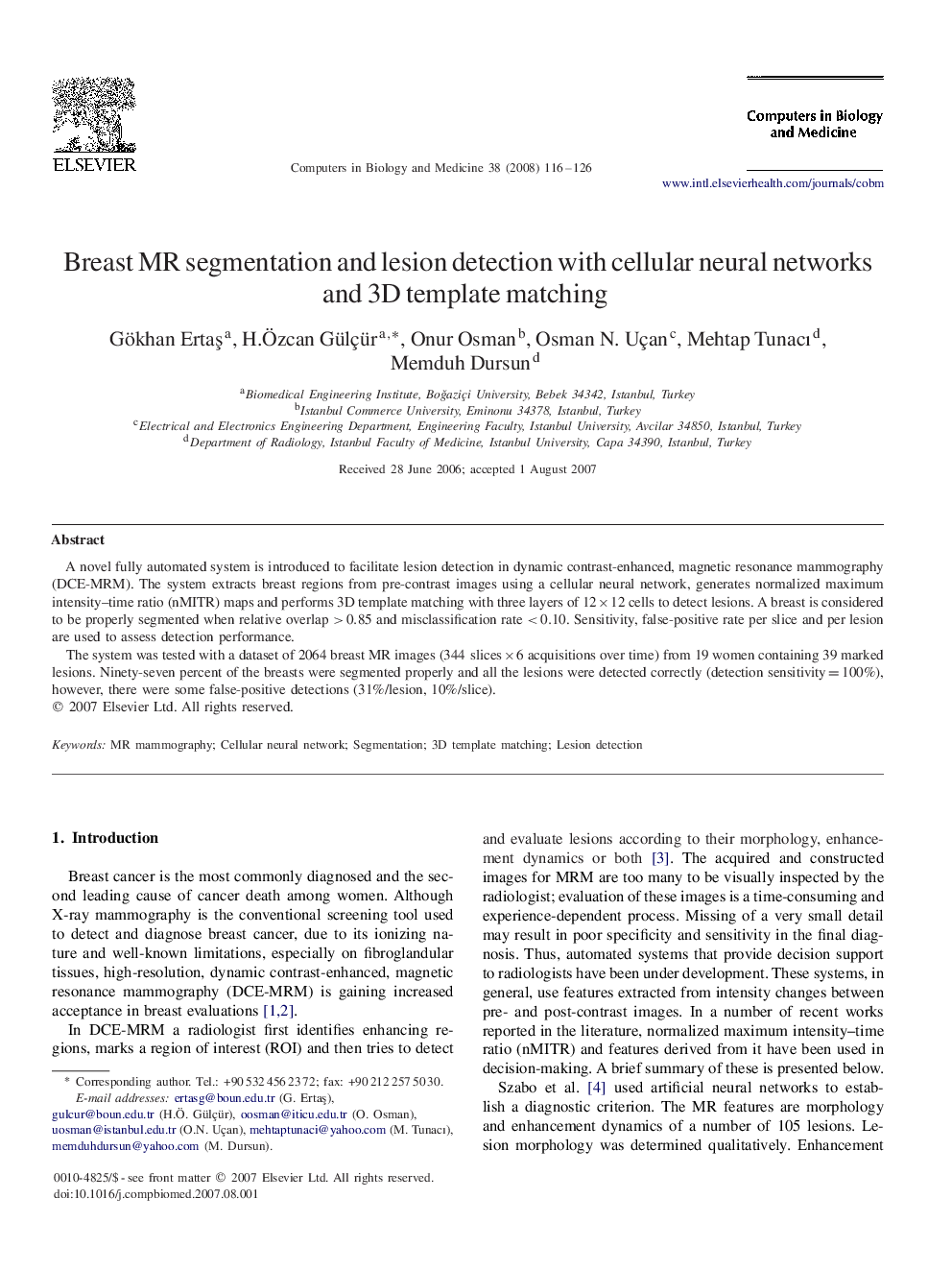| Article ID | Journal | Published Year | Pages | File Type |
|---|---|---|---|---|
| 505635 | Computers in Biology and Medicine | 2008 | 11 Pages |
A novel fully automated system is introduced to facilitate lesion detection in dynamic contrast-enhanced, magnetic resonance mammography (DCE-MRM). The system extracts breast regions from pre-contrast images using a cellular neural network, generates normalized maximum intensity–time ratio (nMITR) maps and performs 3D template matching with three layers of 12×1212×12 cells to detect lesions. A breast is considered to be properly segmented when relative overlap >0.85>0.85 and misclassification rate <0.10<0.10. Sensitivity, false-positive rate per slice and per lesion are used to assess detection performance.The system was tested with a dataset of 2064 breast MR images (344slices×6 acquisitions over time) from 19 women containing 39 marked lesions. Ninety-seven percent of the breasts were segmented properly and all the lesions were detected correctly (detection sensitivity=100%sensitivity=100%), however, there were some false-positive detections (31%/lesion, 10%/slice).
